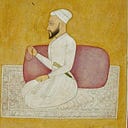Below is map looking at the Muslim population in the greater South Asia region. Countries depicted here include India, Pakistan, Sri Lanka, Bangladesh, Bhutan, and Nepal. Data was taken from official census figures, and slightly adjusted to account for relative population growth, in order to arrive at a figure for 2019. Note that this figure displays the percentage of a district’s population that is Muslim.

A few observations:
- There appears to be a stark divide at Indian and Pakistan Punjab, which as many know is a result of the mass ethnic cleansing that went on in the region during the partition of British India. The same phenomenon is also observed in the adjacent region of Jammu.
- There’s a much more natural gradient from Sindh to Gujarat, which saw comparatively less communal violence during partition.
- There are large Muslim majority areas in India adjacent to Bangladesh. This is partly the result of an unfavorable partition line drawn by the British in 1948 that allocated these areas to India, and partly the result of a porous border with Bangladesh that has resulted in undocumented migrants settling in India.
- The distribution of Muslims in India largely seems to be consistent with those areas that were historically ruled by Muslim Empires. The exception being the large Muslim populations in Kerala and coastal Sri Lanka, which were exposed to Islam via trade rather than conquest.
- The odd distribution of Muslims in South-Asia generally (highest at the margins) has engendered a number of theories seeking to explain this phenomenon. While no theory is completely explanatory, Richard Eaton’s thesis appears to be the leading one. In short, the western and eastern frontier areas of the Indian Subcontinent were socially and ecologically distinct from the Hindu agrarian society found in much of India, which led to most of the former converting to Islam, while most of the latter did not.
